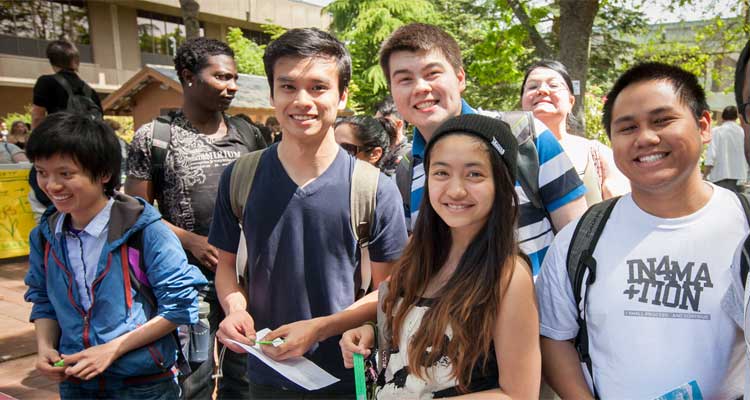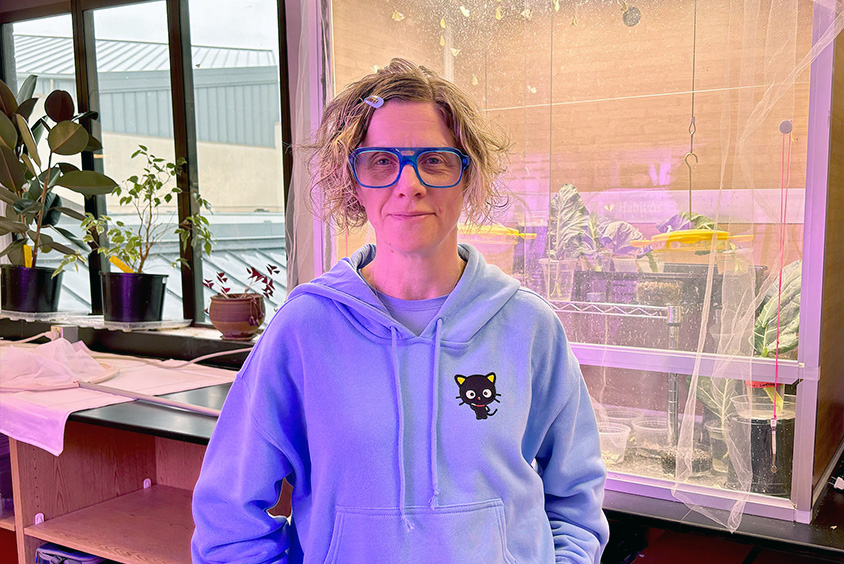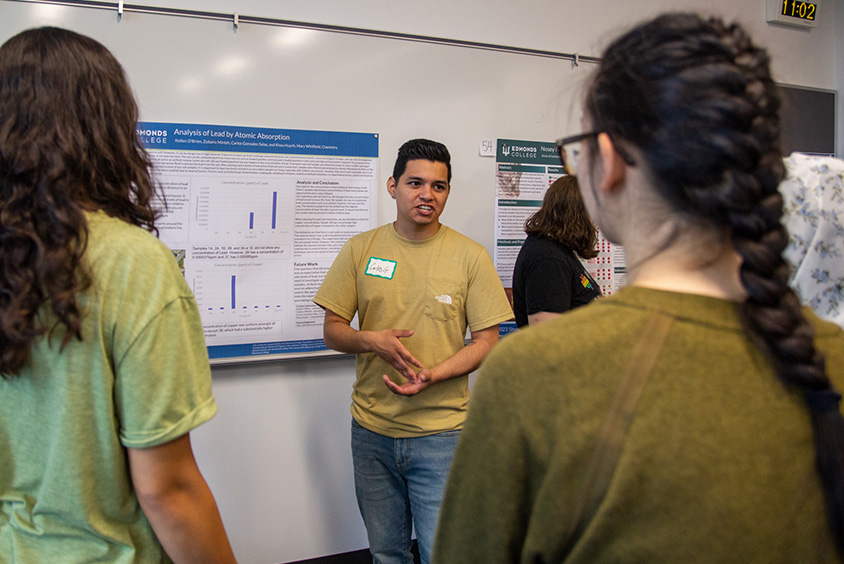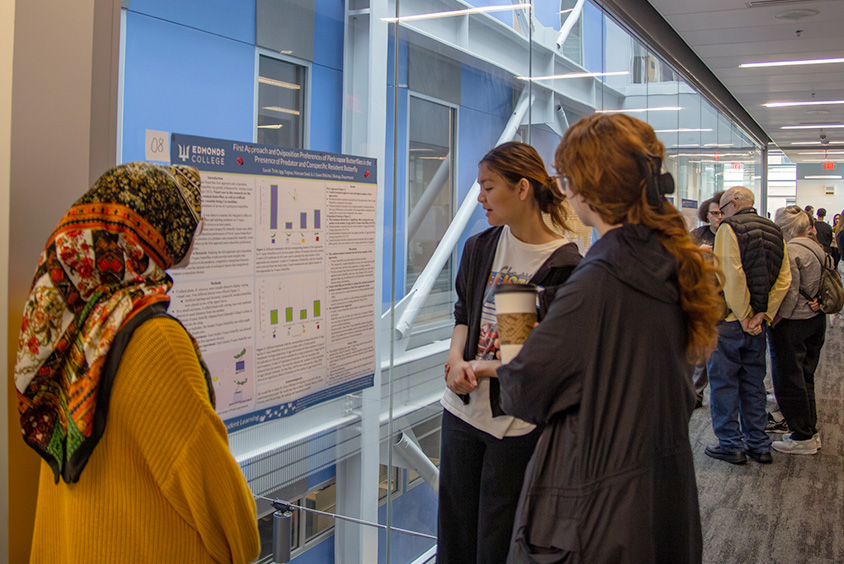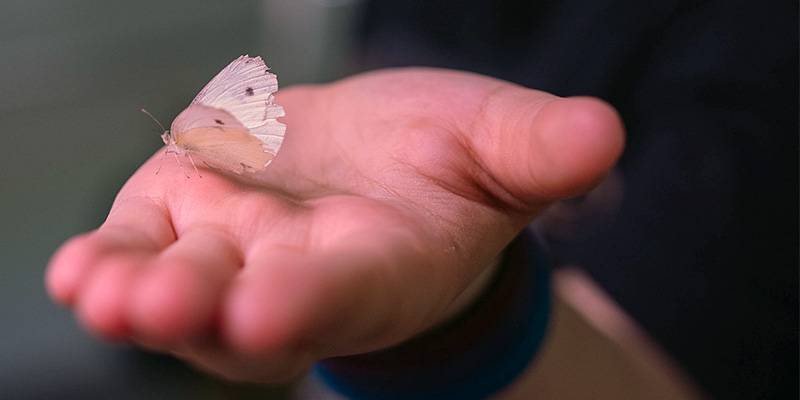
Butterfly Lab Provides Unique research Opportunities
Over 25 years ago, Gwen Shlichta had just completed her undergraduate degree and was eager to undertake a research job before starting graduate school.
She found a position as a lab technician in the Kingsolver lab at the University of Washington, where she spent the next four-and-a-half years conducting experiments on cabbage white butterflies (scientifically known as Pieris rapae). The research focused on examining the effects of temperature on the growth rates of this familiar insect species found throughout the Pacific Northwest.
Fast forward 25 years, and Shlichta is now Dr. Shlichta and a biology instructor at Edmonds College, where she runs her own butterfly lab. In 2020, at the height of COVID when most biology labs were still online, Dr Shlichta, with the support of the Biology Department, decided to return to research the organism she knew well and start a butterfly lab. This allowed her students to focus their research questions on one specific organism and work collaboratively as a team on understanding the impact of temperature on its growth and development.
“I returned to working on cabbage white butterflies because I wanted the students to focus on one model system,” Dr. Shlichta said.
During the process of establishing the Butterfly Lab, Shlichta contacted former colleagues who were working on cabbage white butterflies and began collaborating with them on research ideas to engage students. In 2021, a colleague at the University of Washington, Dr. Lauren Buckley, invited her to collaborate on an NSF Organismal Response to Climate Change grant.
This $1.6 million grant was awarded in 2022 and will run until 2026. It established the Washington Resurvey of Pierid Project (WARP) with the broader impact goal of increasing the retention of community college students in research. It supported the creation of a Course-based Undergraduate Research Experiences (CUREs) at Edmonds College under Dr. Shlichta’s guidance and provided a bridge to research internships and continued research at the University of Washington.
Cabbage white butterflies are considered pests that are great adaptors to temperatures. They are amazing survivors, so studying how their population sizes are affected by climate and habitat changes could indicate how other important species for pollination services, like bees and other butterflies, could be affected. “If an invasive pest species, like our cabbage white butterfly, is negatively impacted by changes in temperature, then this should send up a red flag that we are headed for dire straits if we don't change course,” said Dr. Shlichta.
UGR opens doors
In the nondescript lab located in the heart of campus, Edmonds students focus on how climate change affects the eating habits, mating behaviors, and even cannibalistic tendencies of Pieris rapae. Throughout the year, students work in collaborative groups to develop research ideas, design and conduct experiments, analyze data, and present their findings to peers, community members, and other scientists in the field.
This hands-on work provides valuable insights into the ecological impacts of climate change on the cabbage white butterfly, while offering students invaluable experience in undergraduate research – a type of substantial engagement often scarce at the community college level. Thanks to programs like Shlichta's and others at Edmonds College, students gain these unique research experiences that will benefit them in their academic and professional journeys, effectively bridging a gap.
“Undergraduate research opportunities at Edmonds College open doors for students as they advance in their careers,” said Dr. Shlichta, with a cage full of cabbage white butterflies fluttering in the background of her lab.
“We build relationships with outside collaborators, such as the University of Washington and the Pacific Northwest Research Institute. We teach core competencies and research skills in our courses so that when students transition to these institutions, they are recognized for their skills and are enthusiastically hired or invited into their programs.”
The biology program at Edmonds has seen several of its students, like Jennifer Lopez, go directly to Buckley’s lab at UW. After earning an associate’s degree at Edmonds, Lopez transferred to UW and earned a coveted research assistant position.
“There's nothing better than having actual hands-on experience and applying the concepts that you're learning, and using those skills in the laboratory,” said Lopez, who was initially drawn to Edmonds because of its diverse community.
“I found that undergraduate research is more engaging and involves a lot of problem-solving that you would see in real-world experiences with other laboratories, or even medicine.”
Lopez originally intended to become a veterinarian before changing her focus to medicine. “When I reflect upon the skills that I was taught at Edmonds and the research specifically, I'm just so thankful that I had that opportunity, because many other schools don't offer that,” she said.
“Even though I'm going into medicine, working with caterpillars and learning all the skills and doing all the interesting things that we did at the cabbage white butterfly lab at Edmonds, led me to rediscover and fuel my passion for biology. It gave me the skills to be a resilient scientist and biologist.”
Being able to experience undergraduate research is beneficial to those who are also not necessarily interested in doing it for a career. It builds educational foundations that transcend all facets of academia and professions.
“I think this experience is valuable because we're working in a lab setting and we're working on all these procedures, and a lot of it is independent,” said Carlos Gonzales-Salas, who transferred to Western Washington University from Edmonds, where he will study kinesiology.
“We had to come up with our research proposal and methods. There is guidance from Dr. Shlichta, but for the most part, the reins are handed off to us.”
Gonzalez-Salas also really liked the group aspect of working in the lab. He feels it will benefit him incredibly moving forward. “We might not necessarily know each other, but we still are expected to work with each other, and I think that sort of collaboration experience is valuable.”
Grants promote a collaborative learning environment
In August 2024, Edmonds was awarded a $500,000 grant from the “ Innovation in Two-Year College in STEM Education” program to make more course-based undergraduate experiences available for students. The grant helps promote UGR opportunities on campus and validates the importance of research opportunities for students at two-year colleges.
“This three-year grant from the NSF will enable the college to broaden participation in STEM, fostering inclusivity as more students pursue STEM-focused credentials,” Edmonds President Dr. Amit B. Singh said in August to announce the grant.
“Edmonds College is aiming to increase the presence of undergraduate research experience sources on campus so that students can pursue different areas of research throughout STEM and social sciences,” added Dr. Shlichta. In addition to biology, the college offers UGR opportunities in chemistry, physics, mathematics, and engineering courses.
One of the primary goals of the grant is to establish a collaborative learning environment where students can share their undergraduate research with a community of scientists and experts. Each year, the college transforms the second floor of Hazel Miller Hall into an undergraduate research symposium.
The space takes on an art museum-like atmosphere, featuring walls adorned with elaborate and informative posters and abstracts that artistically showcase the students' projects. Students from various STEM fields present their research to their peers. Curious participants and visitors move from project to project, where students are eager to share their findings.
At the end of the symposium, Scientific Presentation badges are awarded to students who successfully present their work. Each department selects one project as most outstanding. Lopez won Outstanding Research in biology during the 2023 symposium.
“It kind of gave me a little confidence boost,” Lopez recalled. “I felt like, especially with transfer students and minority students, there can be a lot of impostor fears, and you may feel like you don't quite belong. But people here at Edmonds encourage you and show you, ‘No, you do belong.’ Just because you don't see many people who look like you doesn't mean you can't do this.”
This year’s undergraduate research symposium will occur on June 13 in Hazel Miller Hall from 10 a.m. to 12 p.m. The symposium is free and open to the community.
The event coincides with Triton Visit Day, a campus-wide open house from 10 a.m. to 3 p.m. where prospective students and community members are invited to come on campus, take a tour, and learn more about the college's programs and services.
"There can be a lot of impostor fears, and you may feel like you don't quite belong. But people here at Edmonds encourage you and show you, ‘No, you do belong.’ Just because you don't see many people who look like you doesn't mean you can't do this."
-Jennifer Lopez

